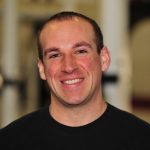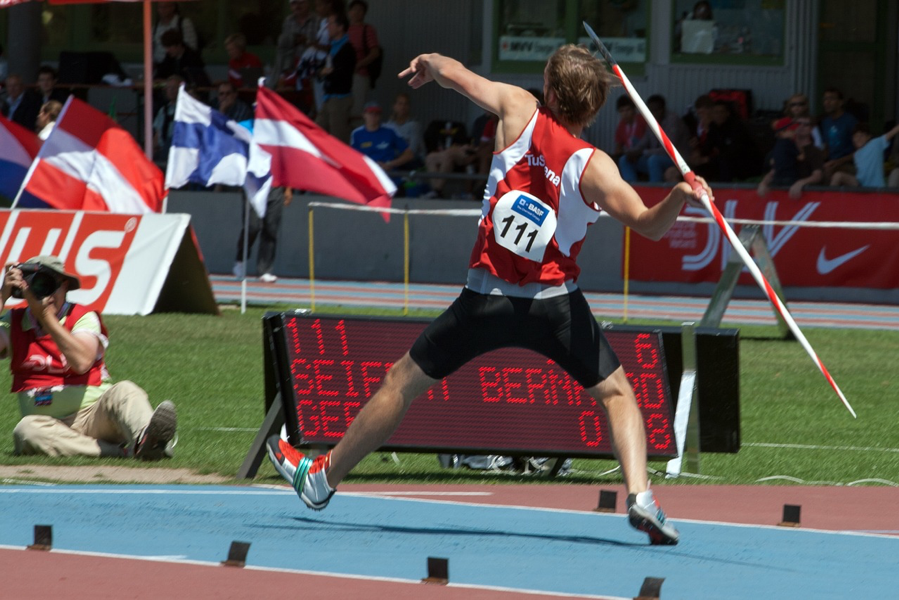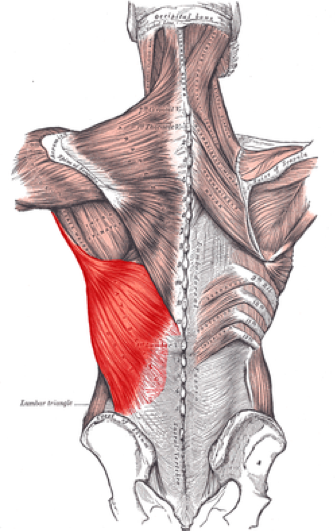By: Eric Cressey
The shoulder is one of the most important anatomical structures to keep healthy in the quest for high performance, but it’s also one of the most misunderstood. Here are three strategies to consider to expand your approach to optimizing its function.
1. Include a mix of both free- and fixed-scapula pressing exercises.
In most sports, the scapula (shoulder blade) has to rotate freely to accommodate a humerus (upper arm) that moves in space. When we bench press, we lock the scapula down. While benching does allow individuals to utilize greater loading to elicit greater hypertrophy and strength gains, it’s important to incorporate “free scapula” pressing exercises like landmine presses, push-up variations, and cable presses to even things out. These drills help to improve serratus anterior recruitment and drive more scapular upward rotation, a pattern crucial to pain-free overhead motion.
2. Appreciate that balancing pushes and pulls probably isn’t enough.
Building on point #3, just as different kinds of pushes have unique impacts on shoulder function, so do different kinds of pulls. Vertical pulling (pull-ups and pulldowns) are very lat dominant, so they’ll drive an athlete into more scapular depression/downward rotation. Just imagine shortening the lat that’s highlighted in this image:
This could be absolutely awesome for a flexion bias client who spends all day sitting at a computer or hunched over on a bike, or someone whose job entails a lot of flexion (roofing, flooring, plumbing, etc.). However, it could actually be more problematic for an athlete with a gross extension pattern – which is what we see with a lot of our athletes in extension and rotation sports.
For this reason, when in doubt, opt for horizontal pulling. It optimizes scapular movement on the rib cage without interfering with top-to-bottom shoulder balance. And, if you’re going to do a lot of vertical pulling with your athletes, just make sure that they have full shoulder flexion range of motion and adequate core control. Passing this test is a good place to start:
3. Understand the actual positions your athletes encounter.
Javelin throwers and shotputters both go through considerable hip-shoulder separation during their throwing motions.
Likewise, both javelin and discus throwers have this same separation – plus a considerable amount of shoulder horizontal abduction and, in turn, anterior shoulder stability challenges that we don’t see in shotput.
With javelin, we see far more shoulder external rotation than we experience with discus. And, there’s very little external rotation needed to be successful in shotput.
These javelin positions closely reflect what we see in the baseball pitch and tennis serve, although forces in the tennis serve are far lower than in either of these other two motions. However, tennis players will hit far more serves in a typical match than a pitcher or javelin thrower could even come close to hitting.
Do you see where I’m going with this? You can’t just assume that all throwers are equal in positions, forces, or volume. Assess, don’t assume.
Wrap-up
As you can see, high-level function of the shoulder is a bit more complex than simply balancing pushes and pulls and doing a few rotator cuff exercises. However, as Einstein once said, “If you can’t explain it simply, you don’t understand it well enough.” That’s my goal in my newest product, Sturdy Shoulder Solutions. If you’re looking to learn more about how we assess, program, and coach at the shoulder girdle, you don’t want to miss it. Click here for more information.
 Eric Cressey is president and co-founder of Cressey Sports Performance, with facilities located in Hudson, MA and Jupiter, FL. A highly sought-after coach for healthy and injured athletes alike, Eric has helped athletes at all levels – from youth sports to the professional and Olympic ranks – achieve their highest levels of performance in a variety of sports. Behind Eric’s expertise, Cressey Sports Performance has rapidly established itself as a go-to high performance facility among Boston athletes – and those that come from across the country and abroad to experience CSP’s cutting-edge methods. Eric is perhaps best known for his extensive work with baseball players, with more than 100 professional players traveling to train with him each off-season, including both 2017 Cy Young Award Winners.
Eric Cressey is president and co-founder of Cressey Sports Performance, with facilities located in Hudson, MA and Jupiter, FL. A highly sought-after coach for healthy and injured athletes alike, Eric has helped athletes at all levels – from youth sports to the professional and Olympic ranks – achieve their highest levels of performance in a variety of sports. Behind Eric’s expertise, Cressey Sports Performance has rapidly established itself as a go-to high performance facility among Boston athletes – and those that come from across the country and abroad to experience CSP’s cutting-edge methods. Eric is perhaps best known for his extensive work with baseball players, with more than 100 professional players traveling to train with him each off-season, including both 2017 Cy Young Award Winners.





0 Comments for “3 Programming Strategies for Building Healthy, High Performing Shoulders”